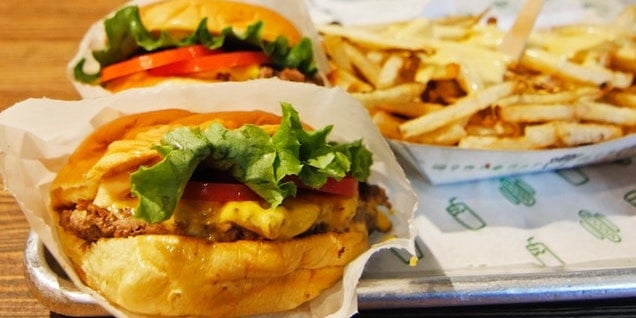
3 types of loyalty program incentives for your QSR

When it comes to giving customers what they want, restaurants have the recipe for success.
You’ve seen the commercials, the one’s promoting two large fries for the price of one or special drinks sold on a certain day. All you have to do to cash in is something for the brand in return (fill out a survey, join a loyalty program, download a mobile app).
Incentives drive results, and many quick-service restaurants have reaped the benefits of implementing rewards programs into their marketing strategies. To help explain how QSRs can use incentives to engage with their customers right now, we spoke with Amin Yazdani, CEO of Craver, a mobile app platform for restaurants.
Loyalty programs are centered around goals
As far as mutually beneficial arrangements are concerned, loyalty programs are about as well-balanced as it gets. Both parties, the brand and the consumer, have something that the other wants — remember the free fry/mobile app sign-up scenario?
The goal of any incentive program, like a coupon or loyalty program, Yazdani says, is to drive the customer to perform your desired behavior. That could be getting a customer to come back within a certain time frame (limited-time coupon), or increasing sales at certain times of the day (happy hour discounts).
While you have a goal that’s pushing your incentive-driven marketing forward, it’s important to remember that your customers have one as well. If you want your loyalty program to be top of mind for your customers, you must give them something to work towards.
“As customers earn points, they work towards a specific goal. What the goal is depends on your program. If for instance, you offer a discount that can be used by redeeming a certain number of points, then your customers are working towards that certain number of points,” Yazdani said.
Types of incentives
Loyalty programs come in a lot of different forms and, as Yazdani explained, the incentives can be strategically determined based on the goal of the brand. Below, you’ll find three trending incentives that are making waves across all industries and are especially beneficial for restaurants: gift cards, donations and experiential rewards.
1. Gift cards
Gift cards are one way brands can support loyalty from consumers and incentivize them to complete a certain action — they’re also one of the most beloved incentives out there.
“Gift cards can be a part of the strategy. Not only do they allow restaurants to be paid upfront (which is great for cash flow), but they also work as a way to keep a restaurant top of mind. For your customers, gift cards make purchases from your restaurant feel like they are free,” said Yazdani. “Restaurants can use them in loyalty programs by allowing customers to earn points towards a gift card or by discounting the amount needed to purchase a gift card. If the gift card is worth $10, a restaurant could set up a coupon allowing customers to purchase the gift card for $9.”
2. Donations
There’s also been a huge uptick in social causes lately; consumers care more about the morality of the businesses they support than ever before. They want to know their dollars are being spent wisely — not just on a menu item, but with a restaurant that can be seen as a force of good.
Yazdani says there are two main things that ensure donation strategies are effective:
Make contributing convenient.
When you ask people to do anything, you need to make it convenient for them to do. Digital ordering tools are effective at making donations convenient.
Show customers that you’re helping too.
“We’ve seen restaurants that donate a portion of their proceeds to the same charity have more success. They have some skin in the game, and they are showing customers that they care too,” said Yazdani.
3. Experiential rewards
Experiences have a way of being incredibly special for consumers. In fact, Generation Z and Millennials are known to prioritize experiences over all else. Brands who are aware of this are embracing experiential marketing, a brand strategy that focuses on building connections with consumers and immersing them in the customer experience.
Whether you are trying or not, you are creating experiences with each of your customers with each interaction, whether in person or through a digital platform. It’s crucial to be consistent in those experiences.
“If you can create an amazing in-person experience, but can’t offer the same quality of service through your online channels, then you won’t be successful,” said Yazdani. “For example, what if you have a clunky order flow, but your food is fantastic? The disconnect between those two experiences will drive customers away.”
Incentivizing your customers to spend more time with your brand can happen in a variety of ways; some you might be used to (paid media, coupon cards, etc.), and others are new on the scene. Whatever you choose, keeping your goals in mind, and those of your customers, will help you develop incentives that work best for your brand.

Lindsay Keener is a brand journalist for Quikly. She covers stories that help to inform and educate consumer-facing marketers.

